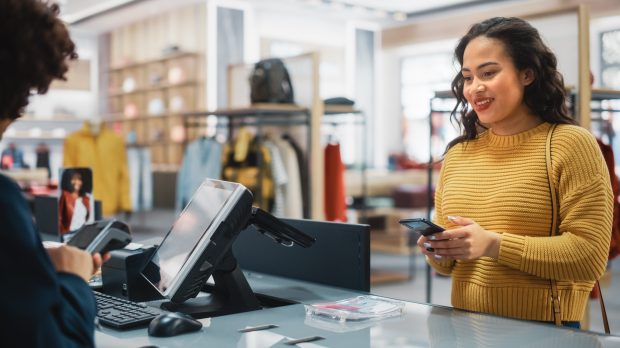Retailers Shift From Personalization to Individualism to Win Loyalty

Gone are the days when retail innovation efforts were limited to increasing the convenience offered to in-store shoppers.
Today, the pandemic-induced digital transformation has heightened merchant awareness around frictionless online shopping experiences and the importance of technology in fostering eCommerce growth.
“We’re morphing away from something that’s channel specific to being able to build seamless, unified consumer journeys wherever they start and wherever they finish,” Madeline Aufseeser, global omnicommerce payment leader at ACI Worldwide, told PYMNTS in an interview.
As a result of this shift, retailers are embracing innovative digital tools that were once considered optional as they aim to meet growing consumers’ demand for seamless digital experiences in-store.
In fact, according to a recent PYMNTS study “Big Retail’s Innovation Mandate,” more than 70% of retail executives in the U.S. and U.K. said they now consider the adoption of digital-first shopping tools such as mobile apps, in-store digital coupons and barcode and QR code scanner apps essential to driving customer loyalty.
Related: Half of Large Retailers Say In-Store Mobile Tech Lacking
But while merchants look to speed and convenience as essential attributes to improve customer loyalty, Aufseeser said winning the loyalty game will require a shift in their approach and a move from personalization to a concept she termed individualization.
“Personalization gets at understanding the customer’s preferences; individualism takes it a step further and helps the merchant understand consumers’ behavioral intent,” she explained.
She added that merchants could leverage innovative digital tools to accelerate that shift to individualism, a level at which retailers take into account key milestones and events occurring in a customer’s life, such as birthdays, wedding anniversary or the birth of a child when curating offers and items.
Celebrating a consumer’s individualism this way creates lasting memories that drive customer loyalty, she said: “It’s not just going to X store on my birthday and getting 10% off [on a product]. It’s more point in time and appropriate and a lift in that experience.”
Merging Data and Analytics
Though efforts are being made to accommodate consumers’ desire for frictionless digital experiences in-store with digital tools, current measures still appear to fall short.
In fact, according to the PYMNTS study, only about half of retailers surveyed reported being satisfied with both the in-store digital tools they provide and the customer experience they offer.
“Only a slim majority of general retailers (53%) and pharmacy and convenience stores (54%) — and just 50% of grocery and 9% of automotive merchants — are satisfied with both the digital tools they currently use and the customer experience they deliver,” the report noted.
But although retailers might not be fully satisfied with the service they currently provide, the ability to invest in and merge data across channels when modernizing their platforms can make all the difference. “We can’t emphasize enough how the coming together of payment data and analytics, and what’s actually been purchased, is going to be huge,” Aufseeser said.
In that process, payments orchestration also becomes critical, she added, “enabling merchants to sell more, lose less, and maximize their margins.”
Cross-cultural Differences
Per the report, retailers made a significant shift towards integrating instant payments into their current payments strategy this year, with 43% and 33% of U.K. and U.S. retailers, respectively, having made active plans to launch real-time payment options within the next three years.
Read more: What U.K. Consumers Expect From Their Grocery Shopping Experiences
Pointing to the difference in results per market, Aufseeser said she was not surprised that a higher share of British merchants was committed to integrating innovation-based real-time technology in-store than their U.S. counterparts.
This gap in commitment, she explained, is due in part to differences in consumer payment preferences in each market, with the U.S. being an “exceptionally mature” credit card market, whereas the U.K. remains a primarily debit card market where cash usage is still high.
There is certainly a big opportunity for real-time payments in both markets, she added, but the adoption pace may be different. In the U.S. for example, the adoption of apps such as Venmo and Zelle is an indication that consumer preference for real-time account-to-account (A2A) payments remains high.
See also: Digital Consumers Demand UK Grocers Improve Online, In-Store Shopping Experiences
Moving forward, Aufseeser reiterated the importance of merchants leveraging data to create meaningful offers and experiences for consumers, as well as ensuring that the different channels and the payment mixes fit well together.
The ability to marry that payment orchestration element with marketing will be key as consumers move down the funnel. “It’s one thing to be able to make great offers, but it’s another thing to be able to convert that offer into an actual purchase,” she said.
For all PYMNTS EMEA coverage, subscribe to the daily EMEA Newsletter.
